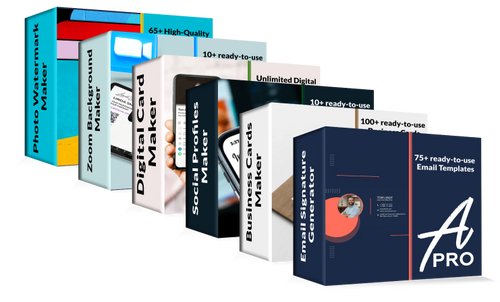Are you in the early stages of planning your business and need to understand the fundamentals of effective logo design? Look into a typography logo design. In this article, we will demystify the process of creating a typography logo, providing you with practical tips and expert advice to help you design a logo that captures the essence of your brand. Whether you have a limited budget or simply want to take a hands-on approach to your brand identity, this guide will equip you with the knowledge and tools to create a professional and visually appealing logo that resonates with your target audience.
Why Choose a Typography Logo?
A typography logo offers numerous advantages that make it a compelling choice for businesses. Firstly, typography allows for the creation of a unique and memorable brand identity by using carefully selected fonts that reflect the personality and values of the business. Additionally, typography logos are versatile and adaptable, making them suitable for various applications across different platforms and mediums. The use of typography in logo design also enables businesses to effectively communicate their message and establish a strong visual presence. With the right combination of fonts, a typography logo can convey professionalism, creativity, elegance, or any other desired attribute, helping businesses stand out from the competition and leave a lasting impression on their target audience.
Key Factors To Consider When Designing a Typography Logo
Font Selection
Choosing the right fonts is crucial when designing a typography logo. Consider the following factors:
- Brand Personality: Select fonts that align with the personality and values of your brand. For example, a modern and sleek brand may opt for clean and minimalist fonts, while a vintage-inspired brand may choose more ornate and decorative fonts.
- Legibility: Ensure that the chosen fonts are easily readable, even at small sizes or from a distance. Avoid overly complex or intricate fonts that may hinder legibility.
- Versatility: Opt for fonts that work well across different mediums and sizes, maintaining their visual impact and legibility whether used on a website, business card, or signage.
Typography Hierarchy
Establishing a clear hierarchy within your typography logo helps guide the viewer's attention and communicate important information effectively. Consider the following:
- Primary Element: Determine the most important element of your logo, such as the brand name or a key word, and make it visually prominent.
- Secondary Elements: Use variations in font size, weight, or style to differentiate secondary elements, such as taglines or additional text.
- Balance and Proportion: Ensure that the overall composition of your typography logo is visually balanced and harmonious, with the hierarchy guiding the viewer's focus.
Color Palette
The color palette of your typography logo plays a significant role in its overall impact and brand representation. Consider the following:
- Brand Identity: Choose colors that align with your brand's personality and evoke the desired emotions. For example, warm colors like red or orange can convey energy and passion, while cool colors like blue or green can evoke a sense of calmness or trust.
- Contrast and Legibility: Ensure that the chosen colors provide sufficient contrast between the text and background, ensuring legibility across different backgrounds and mediums.
- Consistency: Establish a consistent color palette that aligns with your brand's overall visual identity, ensuring that the colors used in your typography logo are cohesive with other brand elements.
Simplicity and Distinctiveness
When designing a typography logo, simplicity and distinctiveness are key factors to consider.
- Simplicity: Keep the design clean and uncluttered, avoiding excessive ornamentation or complex typography that may distract from the core message.
- Distinctiveness: Aim for a unique and memorable typography logo that sets your brand apart from competitors. Consider customizing or modifying fonts to create a more distinctive and personalized look.
Scalability and Adaptability
Ensure that your typography logo is scalable and adaptable to different sizes and mediums. Consider the following:
- Size: Test the legibility and visual impact of your typography logo at various sizes, from small icons to large banners, to ensure it remains clear and recognizable.
- Digital and Print: Design your typography logo with both digital and print applications in mind, considering factors such as resolution, color modes, and file formats.
- Responsive Design: If your logo will be used on a website or other digital platforms, ensure it is responsive and adapts well to different screen sizes and orientations.
Testing and Feedback
Gather feedback and test your typography logo design before finalizing it. Consider the following:
- Target Audience: Seek feedback from your target audience to ensure that your typography logo resonates with them and effectively communicates your brand message.
- Usability Testing: Test the legibility and visual impact of your typography logo across different devices and mediums to identify any potential issues or improvements.
- Professional Opinion: Consider consulting with a professional designer or seeking expert advice to gain valuable insights and ensure the quality and effectiveness of your typography logo design.
Is Calligraphy Commonly Used In Typography Logo Design?
While calligraphy is not as commonly used as other typography styles in logo design, it can add a unique and artistic touch to a typography logo. Calligraphy, with its elegant and handcrafted letterforms, can convey a sense of customization, sophistication, creativity, and craftsmanship. It is often used in logo designs for businesses in industries such as luxury, fashion, beauty, and artisanal products. Calligraphy can create a distinct and memorable logo that stands out from the crowd, but it is important to ensure that the calligraphic style aligns with the brand's identity and target audience.
How To Design a Typography Logo
Designing a typography logo involves several steps to ensure a visually appealing and impactful result. Follow these step-by-step guidelines:
- Research and Gather Inspiration: Begin by researching typography styles, trends, and successful logo designs. Gather inspiration from various sources, such as design blogs, logo galleries, and competitor logos. This will help you understand different typography techniques and spark creativity.
- Define Your Brand Identity: Clarify your brand's personality, values, and target audience. This will guide your typography choices and ensure that your logo accurately represents your brand. Consider the emotions and message you want to convey through your logo.
- Sketch and Conceptualize: Start sketching rough ideas for your typography logo. Experiment with different font combinations, layouts, and arrangements. Focus on capturing the essence of your brand identity and creating a visually appealing composition.
- Refine Your Design: Select the most promising sketches and refine them further. Pay attention to details such as letter spacing, alignment, and overall balance. Experiment with different font weights, sizes, and styles to find the perfect combination that reflects your brand.
- Choose Colors: Select a color palette that aligns with your brand identity and complements your typography. Consider the psychology of colors and how they can evoke specific emotions or associations. Ensure that the chosen colors enhance the legibility and visual impact of your typography logo.
- Digitalize Your Design: Once you are satisfied with your refined sketch, digitize it using design software or hire a professional designer if needed. Use vector-based software to ensure scalability and flexibility for different applications.
- Test and Iterate: Test your typography logo across various mediums and sizes to ensure legibility and visual appeal. Seek feedback from your target audience and make necessary adjustments based on their input. Iterate on your design until you achieve the desired result.
- Consider Versatility: Ensure that your typography logo works well in different contexts and applications. Test its readability and visual impact at different sizes, both in print and digital formats. Make sure it remains clear and recognizable even when scaled down or used in monochrome.
- Protect Your Logo: Once your typography logo is finalized, consider trademarking it to protect your brand identity. Consult with legal professionals to understand the necessary steps and requirements for trademark registration.
By following these step-by-step guidelines, you can design a typography logo that effectively represents your brand, communicates your message, and leaves a lasting impression on your target audience.
How Do Aesthetics In Typography Logo Design Contribute To Effective Branding?
Aesthetics play a crucial role in typography logo design as they contribute to the overall effectiveness of branding. The visual appeal and aesthetic qualities of a typography logo can evoke specific emotions, create a memorable impression, and establish a strong brand identity. The choice of fonts, colors, and overall design elements should align with the brand's personality, values, and target audience. By carefully considering aesthetics in typography logo design, businesses can create a visually cohesive and impactful brand image that resonates with their audience, enhances brand recognition, and communicates their desired message effectively.
What Typeface Should I Use For My Typography Logo Design?
When choosing a typeface for your typography logo design, consider the following options that are widely recognized for their versatility and visual appeal:
- Helvetica: A timeless and widely used sans-serif typeface known for its clean and modern look.
- Futura: A geometric sans-serif typeface with a sleek and futuristic appearance.
- Garamond: A classic serif typeface with elegant and refined characteristics, often associated with sophistication and tradition.
- Roboto: A versatile and modern sans-serif typeface designed for optimal legibility across various mediums.
- Bodoni: A high-contrast serif typeface with a modern and elegant aesthetic, often used for luxury brands.
- Montserrat: A geometric sans-serif typeface with a friendly and contemporary feel, suitable for a wide range of brands.
- Proxima Nova: A versatile and highly readable sans-serif typeface with a clean and professional look.
- Trajan: A serif typeface inspired by ancient Roman letterforms, often used for a classic and authoritative appearance.
- Avenir: A geometric sans-serif typeface with a balanced and harmonious design, suitable for both headlines and body text.
- Didot: A high-contrast serif typeface with a refined and elegant look, often used for fashion and luxury brands.
Remember, the choice of typeface should align with your brand identity, target audience, and the message you want to convey. Consider the characteristics and personality of each typeface to find the one that best represents your brand and enhances the overall impact of your typography logo design.
Conclusion
In conclusion, typography logo design is a powerful tool for small business owners and entrepreneurs looking to create a strong brand identity. By understanding the importance of typography, considering key factors in the design process, and following a step-by-step approach, you can create a typography logo that effectively communicates your brand's personality and values. The right font selection, typography hierarchy, color palette, simplicity, and adaptability are all crucial elements to consider. By investing time and effort into designing a well-crafted typography logo, you can establish a memorable and professional brand image that resonates with your target audience and sets you apart from the competition. Remember, a typography logo is not just a visual representation of your brand, but a powerful tool that can leave a lasting impression and contribute to the success of your business.
Final Thoughts
Experience the artistry of branding with Artlogo's unparalleled design expertise. Our dedicated team of skilled designers is passionate about creating bespoke handwritten signatures, logos, and QR code business cards that capture the essence of your industry and reflect your unique style. Embrace the limitless possibilities and leave a lasting impression with Artlogo's innovative and distinctive designs that showcase your individuality.
Sources
- https://www.zilliondesigns.com/blog/design-logo-using-visual-hierarchy-principles/
- https://carleton.ca/theprintshop/story/the-importance-of-brand-colours-and-how-to-pick-them/
- https://medium.com/communi-creations/why-simplicity-wins-in-logo-design-a8b5543026c5
- https://designspartans.com/logo-design-scalability/
- https://www.forbes.com/sites/forbesagencycouncil/2020/03/12/ab-testing-the-benefits-and-how-to-use-it-efficiently/



























Share to: